As a business owner, every sale is a success. However, not every sale is final, and sometimes customers may request a refund.
Processing these product returns can be time-consuming and frustrating, but they don’t have to be a constant part of running an online business. There are ways to reduce the number of customer refunds you receive.
In this post, we’ll discuss why product returns are bad for business. We’ll then share three ways to keep your customers happy – and keep those hard-won dollars in your pocket. Let’s get started!
Why It’s Important to Reduce Customer Refunds
Whenever a customer requests a refund, you have a lot of work ahead of you – for zero profit. Processing a refund requires time and effort, and it’s an unexpected drain on your resources. In fact, customers returning electronic products alone cost U.S businesses nearly $17 billion a year.
Every refund is bad news for your bottom line. If you’re going to turn a profit, then it’s crucial that your product returns are few and far between.
A customer who wants to return a product may not be in the best frame of mind. For this reason, it’s important that you maintain a high standard of professionalism and positivity throughout the entire refunding process.
If the refund experience is slow, or your staff seem unhelpful, then the customer is likely to take their refunded money and run straight to your competitors.
A returned product may represent a short-term loss of earnings. However, losing a customer will have a long-term financial impact on your business. To minimize the short and long-term revenue losses, it’s important to take steps to reduce the number of customers who request a refund.
How to Reduce Customer Refunds (3 Tips)
Refunds represent a major headache for all businesses. Let’s make sure your hard-won profits remain in your pocket. Here are three ways to reduce customer refunds.
1. Write Informative and Accurate Product Descriptions
With online shopping, customers cannot physically inspect a product before hitting that buy now button. Instead, they rely on product descriptions. This is all the information shoppers have to help them make the correct purchasing decision:
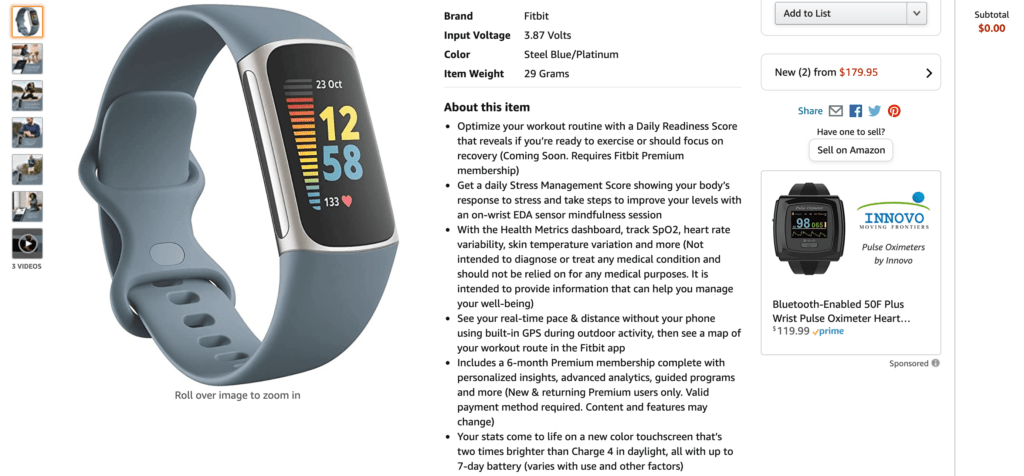
If your product page is incomplete, unhelpful, or outdated, there's a greater your customer will make the wrong decision. For example, they might order a piece of hardware that’s incompatible with their setup, or a jacket that’s too big.
If the customer is unhappy with the product, they’re way more likely to request a refund.
That's why all the information on your product pages should be accurate, detailed, and written in a simple and understandable way. However, there’s also the danger of overwhelming shoppers with too much text. To keep the word count to a manageable level, you might want to link to other resources where appropriate:

For example, many clothing websites state the item’s size and then link to supporting documentation. Here, customers will find the exact body measurements for small, medium, and large sizing:
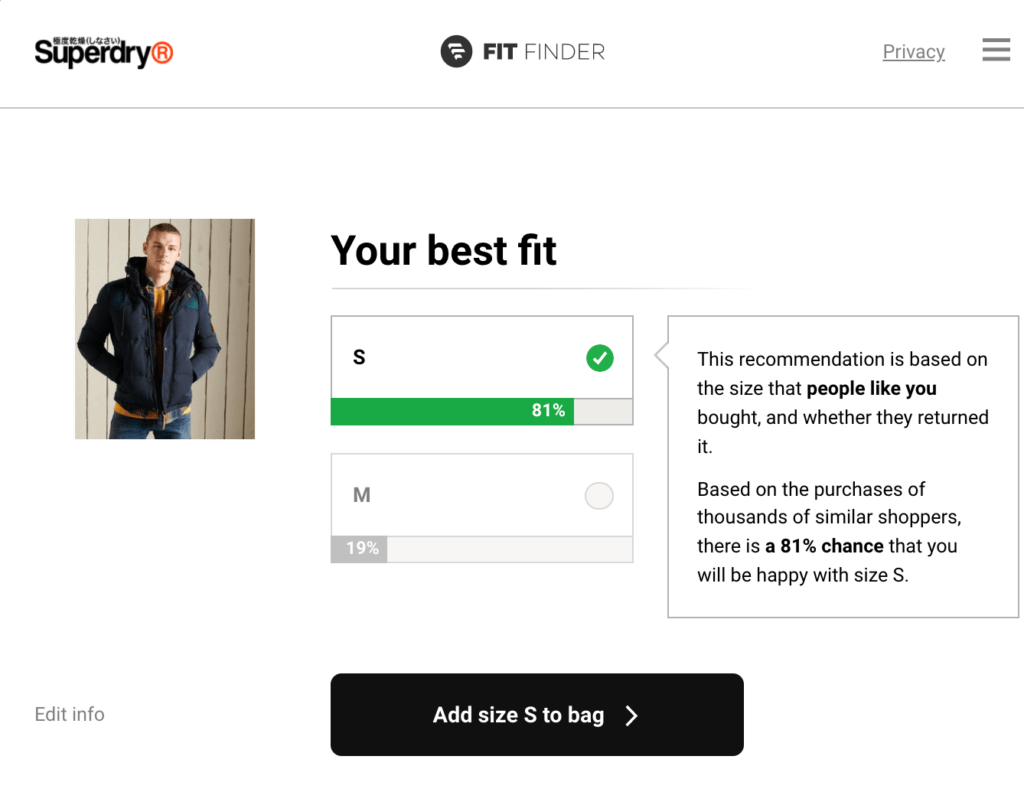
You can also hide some content by default. Shoppers can then click to expand a section in order to access more detailed information:
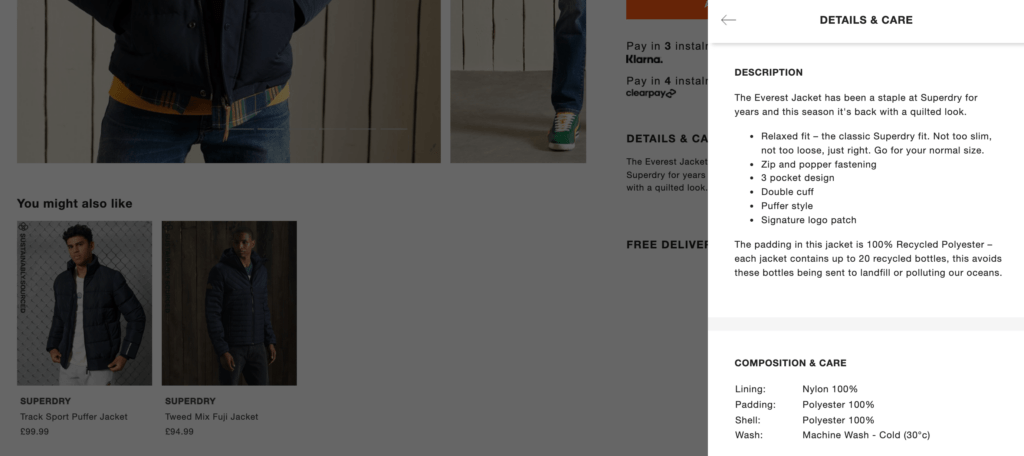
Every product description is different. However, you’ll typically want to highlight the product’s weight and its dimensions.
When writing your product information, it may help to refer to the descriptions used by ecommerce giants such as Amazon. This can provide valuable inspiration, and help you spot any details that are missing from your own product pages.
2. Provide Lots of Visuals
As the saying goes, a picture is worth a thousand words. While shoppers cannot physically see the product in real-life, you can provide lots of high-resolution images:
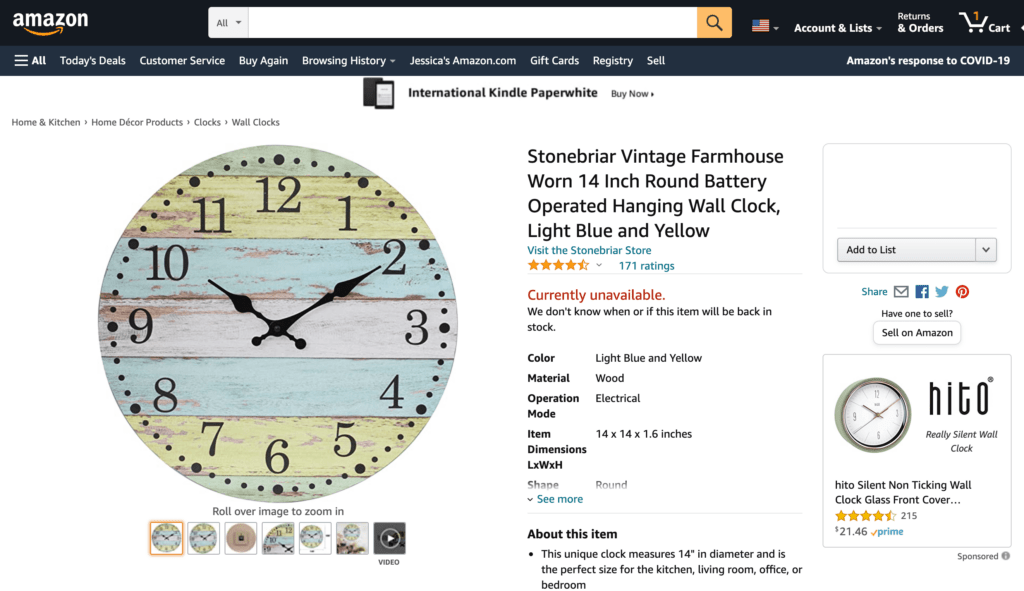
Ideally, we recommend uploading at least four photos of each product. These images should show the item’s front, back, and both sides.
Product images are crucial, but they can also add a significant amount of weight to your website. To help preserve your site’s performance, we recommend using an image compression plugin.
Compression reduces the size of an image by removing or grouping together certain parts of the file. There are many compression solutions available, but TinyPNG is available as both an online service and a WordPress plugin:

Product images are a mainstay of ecommerce stores. However, you may also want to consider creating a short video.
This can be a simple 360-degree view of the product, or something more complex, such as a demonstration of the item’s core features. If there’s a video advertisement for the product, this can help give the customer a clearer picture of what the item looks like.
3. Encourage Your Customers to Leave Reviews
According to research, shoppers are 270% more likely to purchase an item that has reviews. This makes product reviews a powerful way to boost your sales.
These reviews can also help customers make more informed purchasing decisions. By reading a customer’s honest thoughts and experiences with a product, shoppers can decide whether this is the right item for them.
It may seem crazy to give shoppers a convenient way to complain about your products. However, most consumers understand that you cannot please 100% of the people, 100% of the time.
Reading negative opinions about your products can help customers decide whether these drawbacks are deal breakers for them. This may reduce your conversion rates, but it should also reduce the number of refunds you'll need to process.
According to Bright Local, 76% of consumers are happy to leave feedback, if asked. This suggests that generating lots of customer reviews may be as easy as sending follow-up emails asking customers to review a recent purchase:
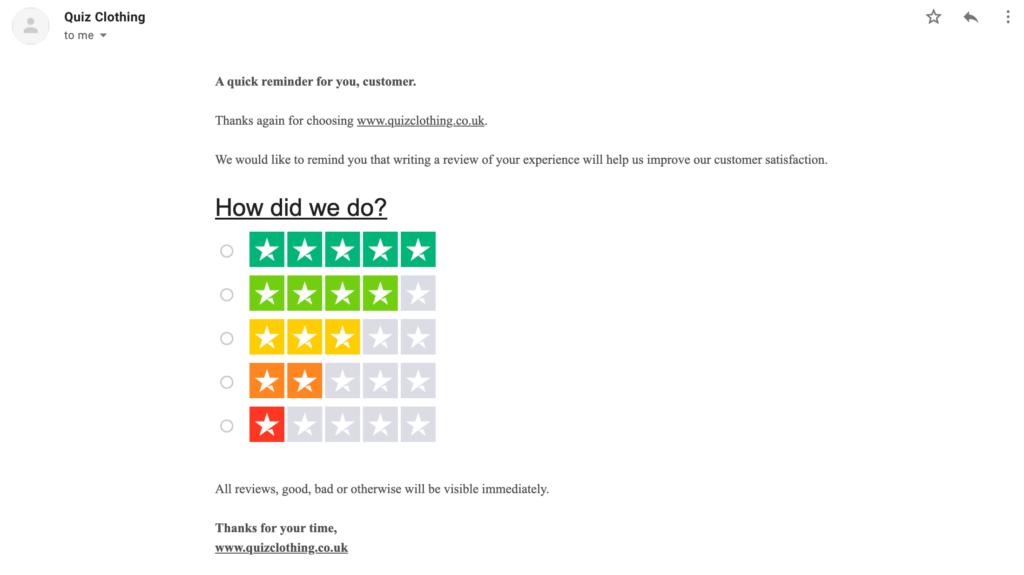
Some of the major mailing platforms can even automate this process. For example, ActiveCampaign makes it easy to send follow-up emails to your audience:
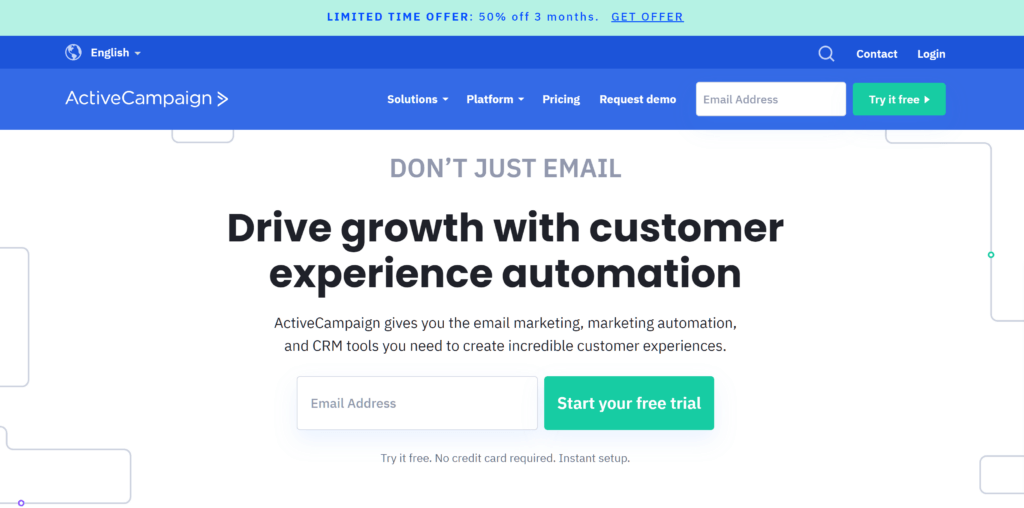
Convincing customers to provide a review is only half the battle. They also need a way to upload their thoughts to your website.
If you’re selling products via WooCommerce, you're in luck. This popular ecommerce platform supports product reviews out-of-the-box. Alternatively, your customers can submit reviews via a plugin such as Site Reviews.
Conclusion
As the old saying goes, the customer is always right. If someone wants to return a product, then it’s often best to provide their refund with no questions asked, rather than risking losing the customer completely.
With this in mind, let’s quickly recap how to ensure that your customers are happy with their purchase:
- Write informative and accurate product descriptions.
- Provide lots of visuals.
- Encourage your customers to leave reviews.
Do you have any questions about reducing the number of product returns? Let us know in the comments section below!
If you liked this post, be sure to follow us on Twitter, Facebook, and LinkedIn.

